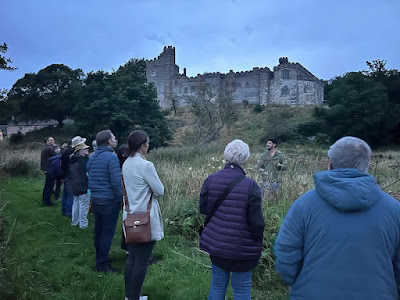by Rowan Davis, BCT's Science Projects Officer
The bat survey season is well underway and the
Science Team at Bat Conservation Trust (BCT) has sent out hundreds of bat
detectors to citizen scientists and ecologists all over the country. In
preparation for this we tested all of our AudioMoths for wear and tear,
performance, and accuracy. We run a whole range of passive acoustic monitoring (PAM) programs here at BCT including our citizen science programs like
the British Bat Survey and NightWatch,
as well as a series of other PAM projects like our National Bat Monitoring Programme's Woodland Survey, our work with Forestry
England on rewilding (read more about this here)
and the National Forest Inventory with Forest Research.
To build a baseline of how our detectors work we partnered with the UCL and used their anechoic chamber, which is a room in which the walls, ceiling and floor are lined with a sound absorbent material to minimise reflections (read more about this room here). Setting up a suite of new AudioMoths, we played bat calls and digitally produced ultrasonic sweeps in this completely sound-absorbent room on campus. The strange wedges you can see in the photo stop any echoes by focussing in the sound waves into the triangular divets and then absorbing them into their material. The room itself is locked shut behind a huge metal door and is separated from the outside world by a raised floor, completely cut away from any sound. It was a ghostly experience and over time being in the room you could hear the thudding of the blood in your ears and the softest of breaths or movements in your body. This completely silent environment meant that we could collect precise measurements of how well our wonderful little detectors perform. We’ll be sending our audio files up through our sound classification system to see how our bat identifying algorithms fare, which will also give us interesting data on its accuracy too!
Due to the cost of using the chamber with its exacting setup, and how long this incredibly precise assessment takes, we tested the rest of our kit in a music studio. After building a repeatable methodology and travelling down into south London, AudioMoths in tow, we spent a couple of days in a drumming studio playing the same recorded sounds. After testing our hardware, we brought our data back to the office and have been uploading it to our classifier. Once we have our baseline data, we can test whether the detectors are getting old or damaged. This gives us a really good indication of what we can use next season and sets us up for building long-term monitoring of our beautiful and vital bat populations across the UK.










